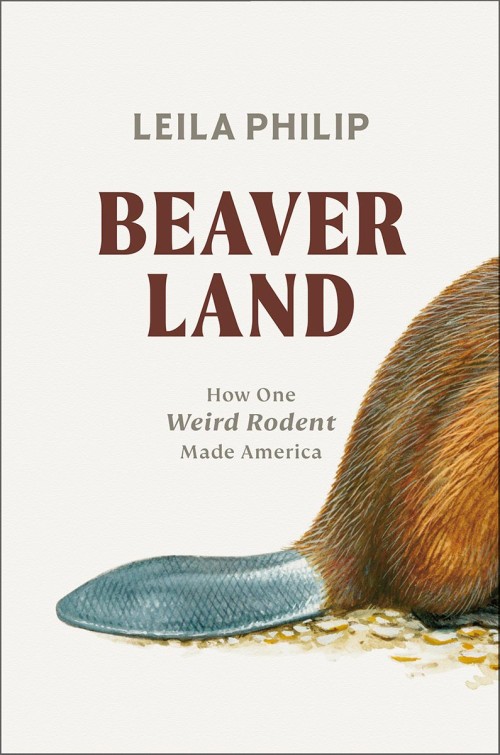by Leila Philip
Grand Central Publishing, 2022
From the hammock where I read Beaverland, Leila Philip’s stunning new book, a beaver dam sits less than 10 feet away. Behind that dam rests a marsh filled with waterfowl. Beaverland transports us to an ancient time when hundreds of millions of beavers created marshes like mine across North America. Philip calls North America during that period “Beaverland,” as most rivers back then were meandering wetlands rather than the narrow waterways of today.
Then came European American settlement and “three successive waves of environmental devastation,” including “the removal of the beavers during the fur trade, then decades of deforestation, coupled with massive draining of wetlands to harness waterpower and for agriculture.” Philip writes about these events with meticulous detail and depth, and notes that “by the late 1700s beavers were largely gone from the East.” The loss of beavers across America “greatly contributed to many of the environmental problems we are now struggling to address.” Beavers were not reestablished until New York State brought in five beavers from Canada in 1905.
Beaverland deftly weaves in ancient Native American stories about beavers, beaver natural history, how beavers helped build empires – including America – and many interviews with beaver experts. But the beating heart of Beaverland highlights the return of beavers to our American landscape as “one of the greatest conservation stories of the twentieth century.” Today, six million beavers thrive in North America. Philip’s elegant prose describes the role of beavers as a keystone species, reminding us that “beavers are the only animals apart from man that radically transform their environment.”
Philip teaches us that these eco-engineers build new ecosystems when constructing wetlands and these “wetlands are a soup of life,” writing that beaver wetlands “contain fifteen times more plankton and other microbial life than wetlands without beavers.” As I read the book, I reflected on how beavers have transformed our lake, leading to the presence of wood ducks, mergansers, bitterns, and herons to feed on the amazing amount of life living in our wetland.
Along with the remarkable ways in which beavers enhance biological diversity by turning rivers into wetlands, the book explains how beaver ponds are un-drying America and making rivers resilient to flooding. This is important because, as environmental filmmaker Sarah Koenigsberg says in Beaverland, “We are watching the West burn and the East Coast float away. Climate change is here.” Philip correctly proselytizes that beavers are one natural way to make things better.
Philip wonders why so many of us love beavers; she posits it is because beavers live near so many of us, including in her neighborhood. Philip writes, “here in the East they are everywhere” and these interactions with beavers offer a “connection to something wild.” In the end, Beaverland reminds us that “beavers are hope.” And that is what Beaverland is about – hope for one massive and natural way for America to repair much of the damage we have done to our rivers, wildlife, climate, and ourselves.


